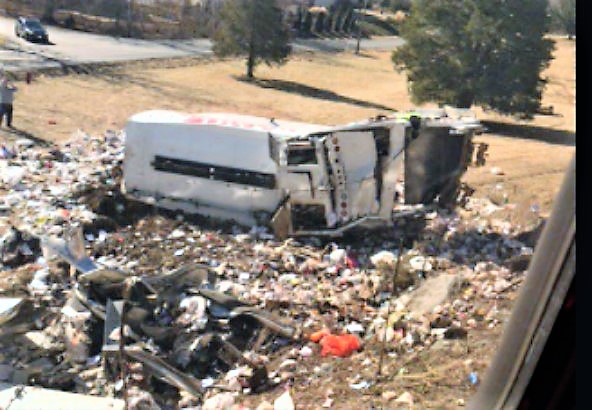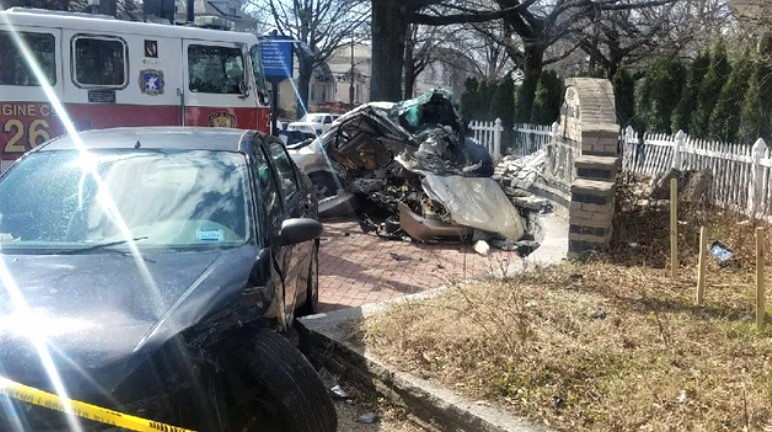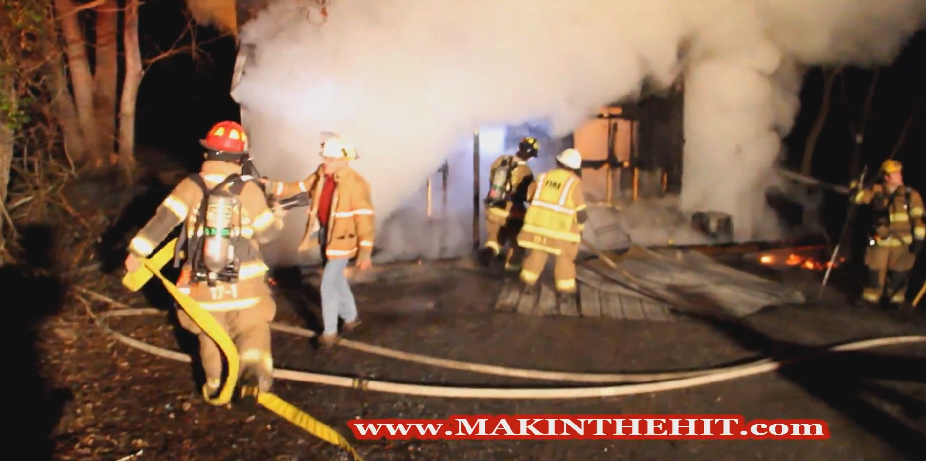DC 911 dispatched firefighters 7 times to the same fallen tree
The things you learn by listening to an entire day of DC 911 radio traffic
Looking for a quality used fire truck? Selling one? Visit our sponsor Command Fire Apparatus
Early last Tuesday, the officer in charge of DC Fire & EMS Truck 17 radioed (above) this was the third time they’ve been dispatched to the same downed tree near Texas Avenue and B Street in Southeast. This was his effort to get DC’s Office of Unified Communications (OUC) to spread the word among 911 center staff to stop sending Truck 17 on this call. The effort failed. OUC dispatched Truck 17 to that same fallen tree four more times in the hours that followed.
Truck 17’s seven calls for the same tree represents just some of what I learned by listening to an entire 24 hours of DC Fire & EMS radio traffic. July 7’s time-stamped radio transmissions were recorded, as always, by the website OpenMHz.com. It’s fair to ask why I would subject myself to such an experience. The answer is curiosity got the better of me. Curiosity inspired by two critics of STATter911.

WHERE”S THE DATA DAVE?
Recently, some of my beliefs about OUC were challenged via Twitter by former agency director Janice Quintana, and a current employee who uses the Twitter handle “Whatever”. One of my beliefs is OUC harms the public every hour of every day. Here are some ways that occurs:
- Wasting critical fire & EMS resources with duplicate dispatches
- Dispatching to the wrong address
- Failing to answer emergency radio traffic for minutes at a time
- Delaying the dispatch of emergency calls
- Poor geography training that hinders pinpointing locations of emergencies
With almost 2-million 911 calls annually, OUC has more impact on the health and safety of people in the Washington area than any other local agency. Combining that large call volume with these daily errors and constant mishandling of critical fire and EMS resources, I’ve drawn another conclusion — DC 911 has harmed more people than all of the police agencies in the city combined. My point is not to pass judgment on the current nationwide and local focus on policing. Instead, I’m questioning why OUC isn’t also in the news or on the radar of the city’s political leaders. The news media and those with oversight responsibilities should be eager to shine light on any government agency that harms the very people they serve.
On Twitter, I was asked where is my data to support these conclusions? It’s a legitimate question. But the critics didn’t like my answers. The biggest obstacle to getting data is OUC’s lack of transparency. The statistics the agency shares generally don’t address the issues I raise and don’t provide good insight into OUC’s operations.
I answered the pointed questions about my conclusions by saying these are my judgments. Those judgments are based on my unique experience of covering 911 in DC for almost 40-years. In addition, I’ve more recently created my own database of OUC failures. Just since the end of February, I’ve documented almost 150 incidents. I’m alerted to these mistakes by tips from firefighters, OUC workers and my own scanner listening. Even then, I don’t don’t have time to document all that I find and I’m sure I’m not finding them all.
Many of the incidents I’ve recorded back up my claims of resource wasting with duplicate responses that tie up firefighters and medics who could be helping others. Admittedly, when there’s no identifiable victim, it’s hard to quantify or illustrate how sending a fire engine or paramedic ambulance to a call that’s already being handled by other units impacts our safety. Other incidents are more clear, like the two recent cardiac arrest calls dispatched to the wrong location. One of those involved a baby born minutes earlier. Or two other cardiac arrest calls sent to the wrong address that were mentioned in recent testimony by OUC’s director, Karima Holmes.
My first listening marathon — and there may be more — is an effort to show how many of these dispatching mistakes occur each day. Of course, radio traffic alone won’t tell us everything behind these errors, but it’s all we’ve got. The reason for this is not just OUC’s transparency issue. It’s also because of a failure by DC Council member Charles Allen to perform adequate oversight. And, to date, there are no independent investigations of OUC by the city’s Office of Inspector General or the Office of the DC Auditor.
JULY 7, 2020
The only real shocker from listening to 24-hours of radio traffic was Truck 17’s seven responses to the same fallen tree. Unfortunately, everything else fits with what I already know about OUC.
Duplicate responses
The duplicate responses dispatched by OUC are consistently the number one problem. It’s also the most common complaint I hear from DC Fire & EMS company officers. On July 7 there were 18 duplicate calls. If you add the absurd situation with Truck 17 and the tree, that number is 23 (two of the seven dispatches for Truck 17 occurred on July 6).
What’s so crazy about the large number of duplicate dispatches is that the software used at OUC is designed to prevent this from occurring. It’s supposed to alert call-takers and dispatchers to duplicate responses at the same address or nearby. Despite that software feature, OUC isn’t usually catching the duplicates. That’s being done by firefighters, EMTs and medics. They end up taking on the role of dispatcher. The recordings from July 7 (above and below) are typical of the duplicate responses. The one above is self-explanatory. The one below chronicles a call where OUC couldn’t decide if the call was at 10th and Rhode Island in Northeast or Northwest.
The duplicate call below shows Truck 13’s officer having to play dispatcher on something that should have been obvious at OUC — that 16th Street & Oates Street NE is likely the same call as 1001 16th Street NE (where the cross street is Oates).
Failing to notify units a call was canceled
Often, you’ll hear firefighters, paramedics and EMTs asking OUC if the call they’re on has been cancelled. They’re finding that important information buried in call-taker notes. And they’re trying to scroll through those notes at the same time they’re responding to the emergency. You’d think that’s key information OUC would relay immediately to the responding units. I heard that happen at least four times on July 7, including the one immediately below.
Dispatching units that aren’t available
On July 7, there were at least two times where ambulances or medic units were dispatched to a new emergency while still in the middle of another one. Minutes were lost discovering the error and getting another unit sent to the call. Here’s one involving Medic 3.
Over dispatching
In one July 7 dispatch, two paramedic engine companies were sent to the same call for a single patient. It’s another waste of critical resources. It’s not the first time I’ve heard this issue. This occurred because Engine 26 wasn’t properly listed as a paramedic engine.
Wrong quadrant
There were at least two calls where the original dispatch had the wrong quadrant of the city. In this one, Ambulance 30B’s crew tried to tell the dispatcher the call was likely on the Northwest side and not Northeast. It was a hard sell, but it turned out to be correct.
OUC’S LEADERSHIP
Over the last 10-months of sharing OUC radio traffic, the facts I’ve reported have not been challenged. No one in charge has said, “You’ve got it wrong Statter.”
Instead, my reporting is largely ignored by OUC and DC’s leadership. The only thing OUC director Karima Holmes has said publicly about my work is something I’ve already acknowledged — that radio traffic alone does not completely explain what happened during an incident. I agree with Ms.Holmes on that point.
But it’s Ms. Holmes who has the ability to solve this problem. She can provide the needed transparency. She can address each of these issues with detailed responses that are factual and complete. She can tell us exactly how many duplicate responses occur each year, each month and each day, instead of some gadfly in Virginia trying to figure this out by listening to 24 hours of radio traffic. Unfortunately, this has long been the way OUC does business. As the video below shows, DC Mayor Muriel Bowser likes how Karima Holmes does that business.
FIX DC 911
The marathon listening session confirmed another belief about OUC: The large majority of OUC workers care about their jobs and the people they serve. I’m sure the constant mistakes bothers them more than it bothers me.
Yet the errors continue. Management has failed. Solving these issues is not a priority. Change will only come by providing good training, exceptional management, policies that make sense and excellent quality assurance.
No 911 center is perfect. There’ll always be mistakes. But OUC keeps making the same mistakes. Over and over.
The evidence in 24 hours of radio traffic supports my claim that these are hourly occurrences. It’s no exaggeration. Good leadership identifies these patterns and addresses them. Unfortunately, at OUC the unrelenting mistakes go unaddressed. When will DC’s leaders stop protecting OUC and start protecting the safety and well-being of the public? When will someone finally fix DC 911?







